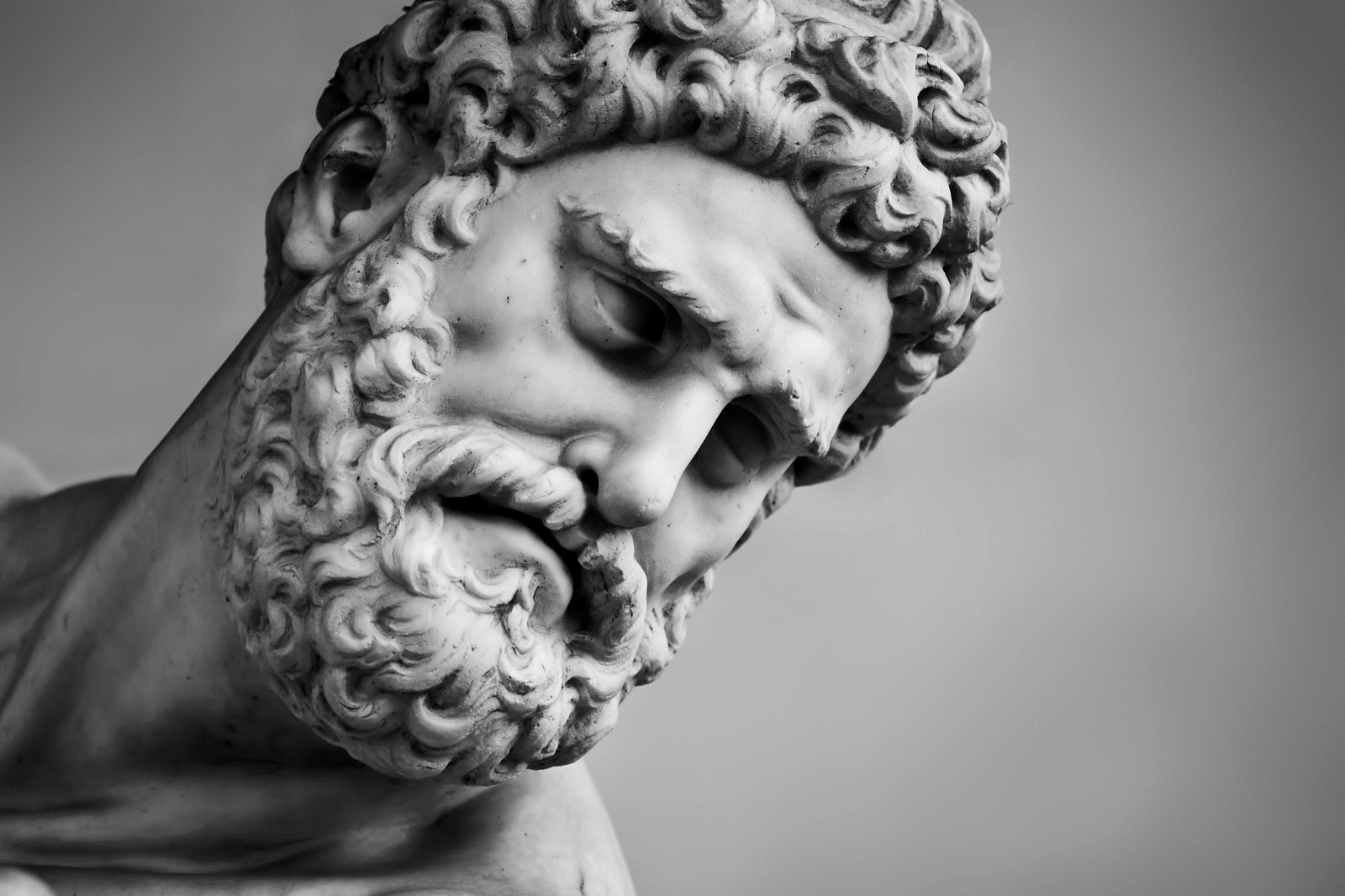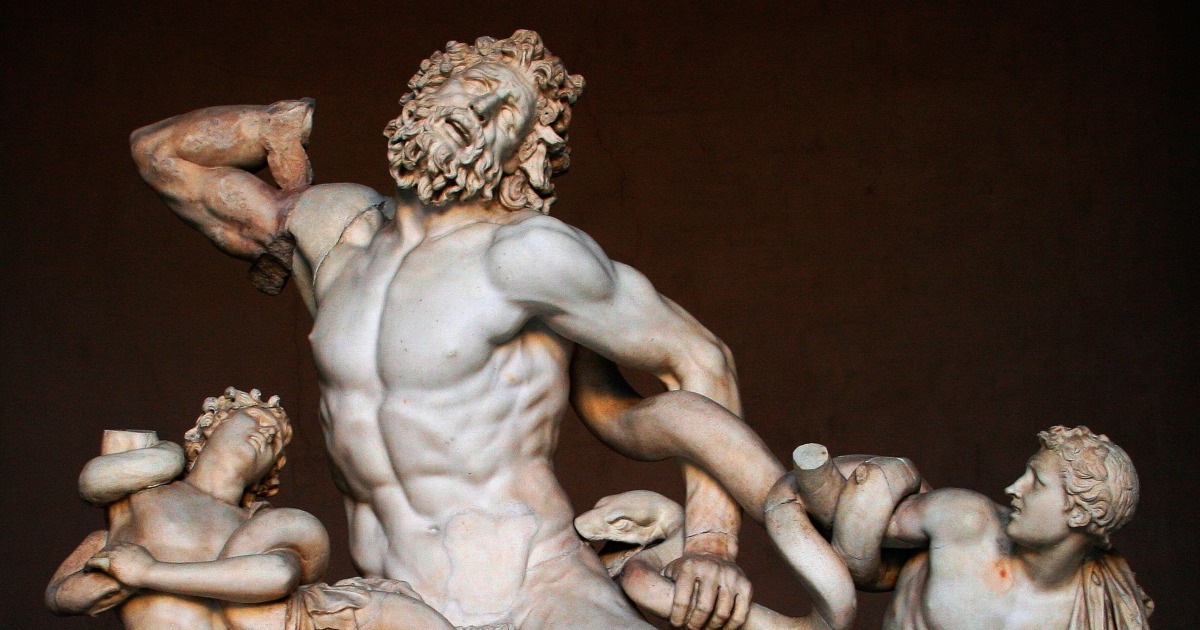Ancient Greece made a significant contribution to the development of world culture. The Greek sculpture Highly developed ancient civilization made it possible to demonstrate a holistic and harmonious view of the world by ancient peoples, to reflect the moral and physical perfection of a person in a three-dimensional model.

Greek sculpture
The great Greek civilization later defined by historians as the Hellenic civilization was born around the XNUMXth century BC from the union of some invading peoples such as the Dorians who, after barbaric and violent battles, settled definitively around the XNUMXth century BC in the territory of the Greek peninsula and the local inhabitants that they gradually encountered along their way.
This ancient civilization that was formed over time began to grow and develop in many sectors such as naval, commercial and social. A great positive impulse was given above all by the art field thanks to the work and talent of famous and unique artists.
In the artistic field, one of the most used forms of art where the Greek artists really stood out to the point of perfection was the sculpture that together with their famous statues, fortunately arrived to our days, brought the civilization of ancient Greece to the Olympus of art.
The art of Ancient Greece became the pillar and foundation on which the entire European civilization grew. The sculpture of Ancient Greece is a special subject. Without ancient sculpture, there would be no brilliant masterpieces of the Renaissance, and it is difficult to imagine the further development of this art.
Statues in Greece have played an important role in people's lives. They were placed in the most significant places, they were used to decorate temples, they were erected in honor of the winners of the Olympic Games. They were installed on graves in memory of the deceased, they were used to decorate public buildings. These classical and Hellenistic sculptures directly influenced Roman sculpture and even Western sculpture in fashion today.
Ancient Greece, like other cultures, underwent various periods in its development. Each of them was characterized by changes in all kinds of art, including sculpture. Thus, it is possible to trace the main stages of the formation of this art form, briefly describing the features of ancient Greek sculpture in various periods of the historical development of this country.
An overview of sculpture work in three cardinal periods of Greek art history reveals continual improvement in style and technique of production, from immobility to movement. It is an ideal model for sculptors who want to find their own way in the profession, taking lessons from the study of the vision of the human body by the ancient masters of Greek sculpture.
Most of the marble statues were destroyed, the bronze ones were melted down as the Christians sought to cleanse Greece of paganism. Four of the seven ancient wonders of the world, the Statue of Zeus, the Temple of Artemis, the Colossus of Rhodes and the Lighthouse of Alexandria were Greek monuments. Today they do not exist, we cannot appreciate the greatness of these works of art. But many Greek sculptures remain in famous galleries around the world.
archaic period
The Archaic period is the first period in the history of ancient Greek art, beginning in 700 BC. C. and ended in 480 a. C. The term "archaic" is a Greek term meaning "early." It is used to describe many events in art that took place in the early stages of Greek culture. Thus, the sculptures of this period indicate the initial skills that Greek sculptors displayed. This stage is a stationary stage in which the pieces were created without movement or flexibility.
His statues were characterized by the symmetry and rigidity of the forms. Important features of the human figure are highlighted. The male figures were nude, the sculptures known as Kuros figures were nude because the athletes were nude during the Olympics.
They had the left leg in front. On the other hand, female sculptures called Korai (maidens) were fully clothed. The poses for his sculpted figures included standing, kneeling, and sitting postures. The Greeks mainly carved figures of gods and goddesses in the likeness of men, women and children. Modern sculptors rarely use the Kuros and Korai types of sculpture.
Due to a lack of skill development, his sculptural figures were not portrayed realistically. In his desire to see smiles, the Greeks gave his lips a curved expression, which art critics call the "archaic smile." It was a form of smile artificially expressed on the face of the sculptures as a result of the lack of sculpting skill.
The first era of historical Greek sculpture was influenced by the statue of ancient Egypt. Traditional Greek sculptures of the time were considered unnatural and inflexible. The body of the sculpture of this time is criticized for being assembled as if from pieces.
It can be seen that the statues have been carved from a rectangular block. These were not portraits, but a symbolic representation of a god. Sometimes, it also functioned as a statue of a deceased person or as a monument to the victors of the Olympic games.
A striking example of archaic female figures are the Goddess with a Pomegranate (580-570 BC) and the Goddess with a Hare (about 560 BC). Among the male images, the sculptural group Cleobis and Biton stands out, whose creator is the famous sculptor Polimedes de Argos (at the end of the 560th-550th centuries BC). Lightness, refinement and playfulness distinguish the works of the old Ionian masters. The most famous example is considered to be the Shadow Apollo, created in XNUMX-XNUMX BC
Monumental sculpture occupies an essential place in the art of the time. It was customary to display in relief the most curious and significant myths of Ancient Greece. Careful consideration of the composition of the pediment of the Temple of Artemis (circa 590 BC) allows you to enjoy the spectacle of the rapidly developing and exciting plot of the famous myth of Medusa, the Gorgon and the glorious Perseus.
Classical period
In the classical period (between the XNUMXth and XNUMXth centuries BC) images showed controlled movement and harmony between tension and relaxation. The contraposto was used for this: a relaxed, natural stance that carries your weight on one leg so that the opposite hip is raised to produce a relaxed curve in the body.
The back is slightly curved in that position. Different points of view were now taken into account: an image could be viewed from all sides, it was no longer intended only to be viewed from a frontal position. During this period, Greek art reached its height. The sculpture was noted for its flexibility and comprehensive study of the representation of movement.
Critical observation and the study of human anatomy led to the creation of sculptural figures in full realism and in their correct proportions. During the classical period of Greek sculpture, the best-known ancient works were made. Stone and bronze became popular material choices during this time. The ancient Greeks gave these statues many active poses.
Ancient Greek sculpture of the classical period may have focused on movement, but the faces on these statues were largely stoic. Only barbarians were believed to show their emotions in public. Humanity was shown idealized in ancient Greek art sculptures. The masterpieces of classical Greece are distinguished by harmony, ideal proportions, which speaks of excellent knowledge of human anatomy, as well as internal content and dynamics.
In the era of the classics, such famous sculptures as Athena Parthenos, Olympian Zeus, Discobolus, Doryphorus and many others were created. History has preserved for posterity the names of the most outstanding sculptors of the time: Polykleitos, Phidias, Myron, Scopas, Praxiteles and many others. The classical period is characterized by the appearance of the first nude female figures (the Wounded Amazon, the Aphrodite of Cnidus), which give an idea of the ideal of female beauty in the heyday of antiquity.
The pediments of the Temple of Athena Aphaia (500-480 BC), allowing to trace the transition from the archaic (western pediment) to the new ideals (eastern pediment), are recognized as a particularly impressive example of creations made in the Early Classics stage. The harmonious combination of the energy of movement and the majesty of the figure marks the moment when the age of the great classics supersedes the archaic classical period.
The most significant milestone of this transition is the creation of the statue of Poseidon (around 450 BC). Perhaps one of the world's best-known and most famous sculptures from the classical period is that of Myron's Discus Thrower, which is the perfect embodiment of the ideal athlete model envisioned by the ancient Greeks.
This statue depicts the young athlete about to throw the discus. He can see the tension in all parts of the body that precedes the actual shot. The perfect physical balance must reflect the moral value of the athlete himself, willing to go beyond his limits and enhance his virtues.
hellenistic period
This is the third and final period in the history of ancient Greek sculpture, beginning in 323 BC. C. and ended in the first century. The term "Hellenistic" refers to the arts that developed under the influence of Greece on the Mediterranean countries during the reign of Alexander the Great. Within the cultural centers of the Hellenistic world, a number of academies arose dealing with serious analysis of a wide range of fields, including art, literature, and medicine.
The canons were designed to judge the quality of the sculpture. This led to increased interest in proportion systems in sculpture. The works were characterized by realism, extreme emotions, extravagant gestures, muscles and shapes. The motion dynamics are accurate, the wind blowing through the wing feathers and the folds of the outfit can be seen in indescribable detail. The sculptors explored three-dimensional movements.
One of the first advances in sculpture during this period was the great interest in the portrait. Individual similarity was absent in both archaic and classical sculpture, but was dominant in Hellenistic Greek sculpture. Not everyone can see the differences between the ancient Greek sculpture of the classical period and the traditional Greek art sculptures of the Hellenistic period.
Late Greek antiquity is characterized by a strong oriental influence in all art in general and sculpture in particular. Complex foreshortenings, exquisite drapery, appear in its numerous details. The emotionality and oriental temperament penetrate the calm and majesty of the classics. Aphrodite of Cyrene, is full of sensuality, even some coquetry, a copy can be admired in the Vatican Museums.
The most famous sculptural composition of the Hellenistic era is Laocoön and his sons by Agesander of Rhodes (the masterpiece is preserved in one of the Vatican museums). The composition is full of drama, the plot itself suggests strong emotions. Astonishing precision and realism, as well as strong emotions, impress and fascinate modern viewers.
All this is aimed at giving works of emotion and temperament, completely unusual for the art of Ancient Greece in earlier periods. This famous sculpture seems to have touched much on an intimate level, even the great Michelangelo Buonarroti in more recent times.
In fact, the sculpture of the Laocoön was found in Rome during archaeological excavations and the young Michelangelo was so fascinated by the statue and its very real movements that convey strong emotions that he became interested in classical Greek sculpture. And we can see these influences when we admire some works of the great sculptor.
Here are some links of interest:


